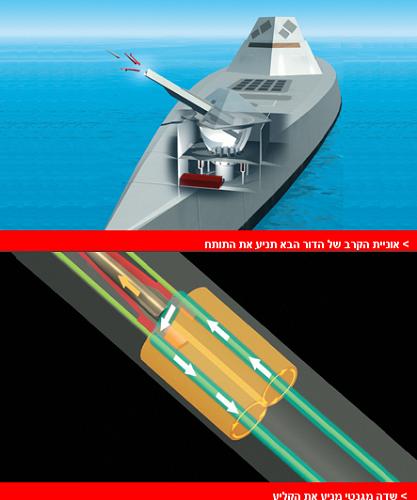A laser, space-launched arrows and an electromagnetic railgun. Is this the weapon of the future?
Popular Sciences

https://www.hayadan.org.il/spacewar051.html
If the weapons designers of the United States military have learned anything from the various wars of the last century, they have learned that the challenges have become less predictable. The nature and capabilities of the US's adversaries change from encounter to encounter, and the decision about the latest weapons technologies that will best serve the soldiers continues to be a dangerous guessing game. The enemy is not necessarily a nation, it can be a terrorist cell. The enemy may not have advanced high-tech weapons, but they blow up truck bombs and send suicide bombers. Despite the technological superiority of the US military today, strategists cannot ignore the possibility that a country that develops advanced weapons will pose a threat in the future.
The American military superiority made some of the weapons systems look a bit excessive - like the submarine fleet, for example. It is not enough to have a weapon that uses cutting-edge technology, it must also meet a military need or an existing threat. Officials say they hope new technologies will shorten combat, minimize casualties, and allow strikes with greater precision.
There are many weapons in the pipeline, such as arrows that will be launched from space and an electromagnetic railgun that will not use any explosives, but will rely only on kinetic energy to destroy targets. Laser weapons will disable enemy equipment using heat instead of force, providing great accuracy and launching at the speed of light.
Popular Science presents the next generation of combat systems. A series of articles about the science fiction future of the Pentagon.
A kinetic missile that flies at a speed of Mach 7
Imagine a large destroyer receiving the location coordinates of the enemy headquarters, which is more than 320 km away. Instead of launching a Tomahawk cruise missile that costs a million dollars, the destroyer points the barrel of a cannon at the target, diverts the electrical voltage from the ship's engine to the turret of the cannon, and launches a projectile 18 meter long and weighing 7 kg through a superconducting launcher. The bullet exits the barrel at supersonic speed - more than Mach 12 - exits the Earth's atmosphere, is guided by a satellite, and in less than six minutes lands on the building. His incredible speed vaporizes the target using only kinetic energy. The US Navy is developing an electromagnetic railgun capable of firing up to XNUMX relatively cheap projectiles per minute.
The technology behind the electromagnetic railgun has been around for more than twenty years, but previous efforts have failed because no ship has been able to generate enough electricity to fire such a weapon. The idea was revived a few years ago when the Navy announced its plans for a next-generation warship, the electric DD(X). The barrel of the electromagnetic cannon will contain two rails six meters long, with a moving part on either side. According to the design, the electric current will pass through one rail, cross the divider, and go down towards the other rail. This circuit will create a magnetic field that will push the divider and the projectile on it up the rail. There still remains research into the accuracy of the impact, and the creation of equipment that can withstand the enormous pressure that will be created.
Today the machines are accurate for limited distances. For a range of 320 km and more, an aerodynamic correction must be made. The projectile will receive trajectory correction data from the satellite and direct itself with the help of moving control surfaces. Since the projectile will be under a load of 45,000 G during the launch, the electronics on it must be strengthened. The projectiles of the electromagnetic railgun will travel 467 kilometers in six minutes - they will start at a speed of 2,500 meters per second and will hit the target at a speed of 1,500 meters per second. The current long-range alternative is guided missiles, which can reach similar ranges of a rail gun, but their cost and storage problems are what drive the efforts to find an alternative. Ships can only carry up to 70 guided missiles, and they cannot be loaded at sea. In contrast, the projectiles of the rail cannon can be loaded easily at sea. Another advantage is that the projectiles of the rail cannon do not contain explosives.
Sale for users of the Hidan site - subscription to Popular Science for 3 months for NIS 49
They know space warfare
https://www.hayadan.org.il/BuildaGate4/general2/data_card.php?Cat=~~~173970102~~~179&SiteName=hayadan
